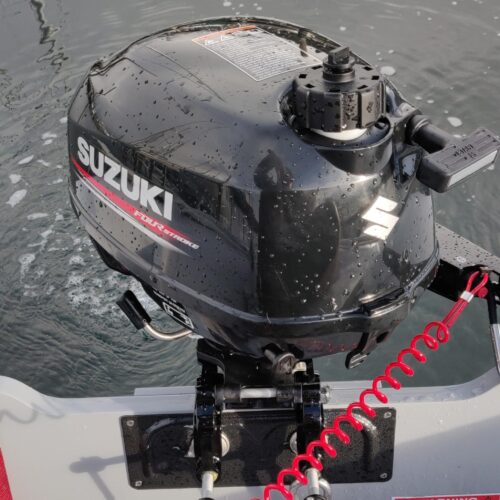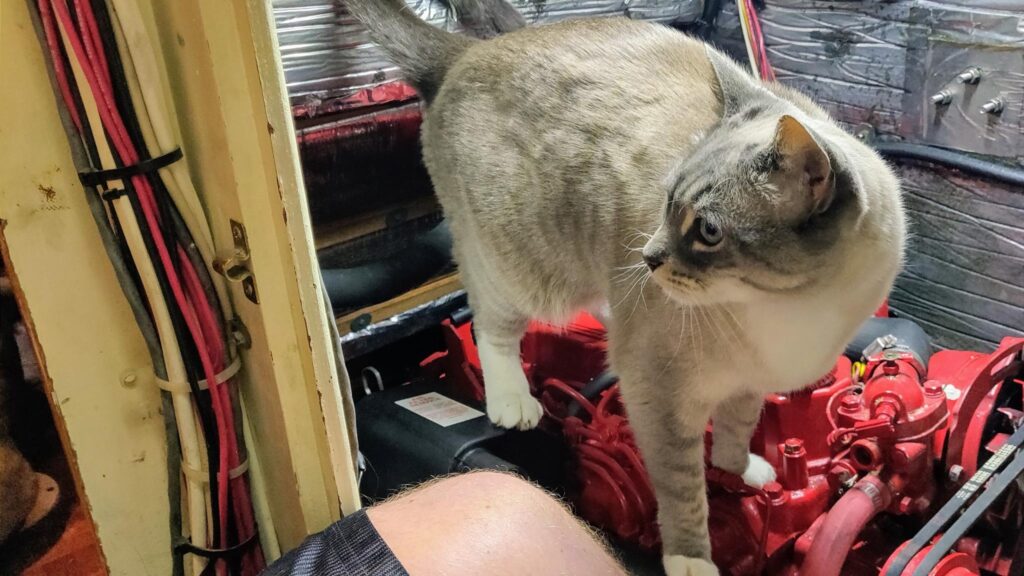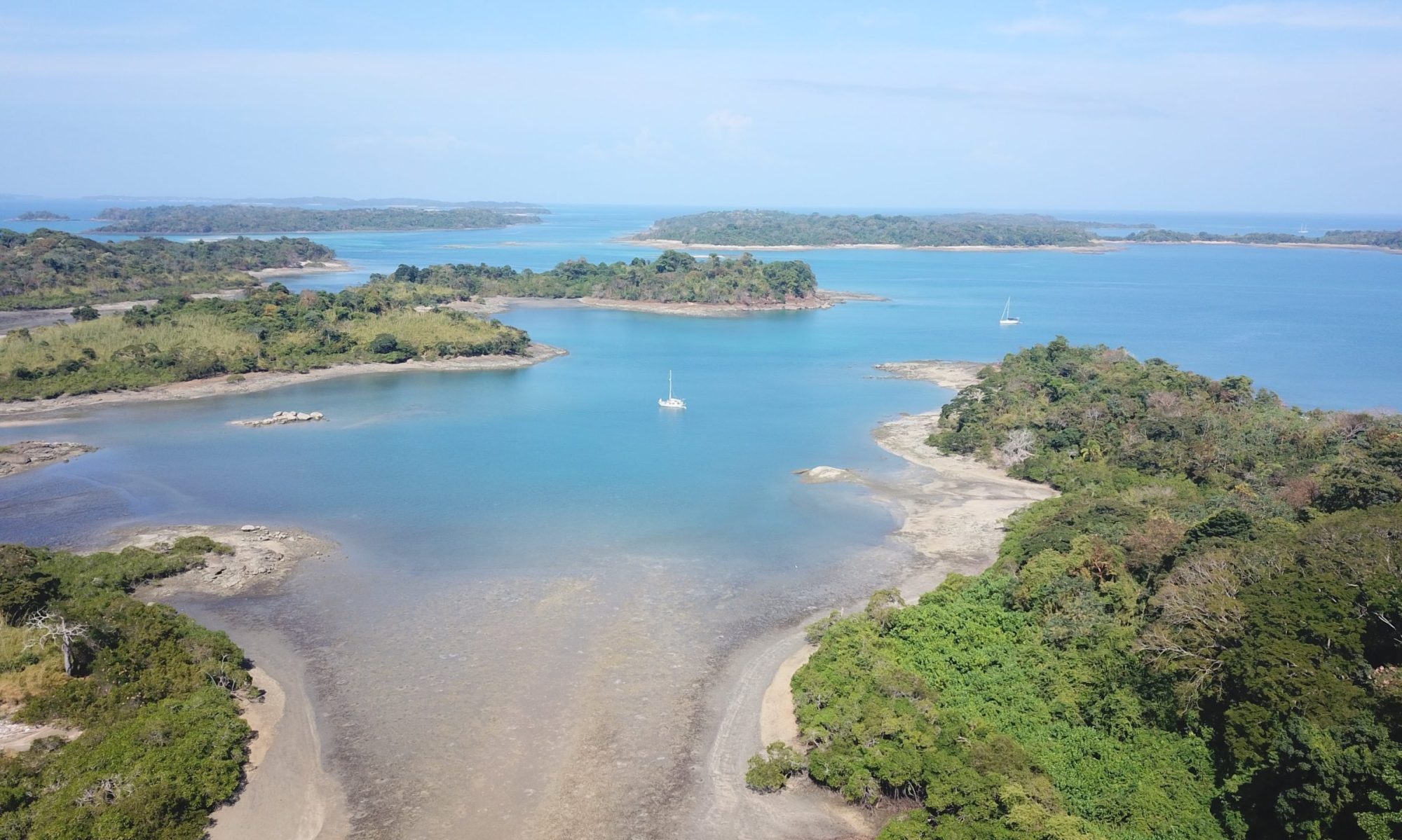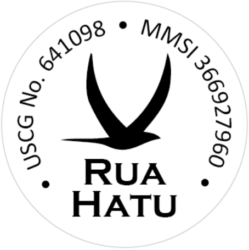So much for a sendoff… I quit both of my jobs last week just as the COVID-19 situation turned dire here in Washington State.
On the one hand, a small boat is probably the safest place to be amidst a pandemic. On the other, “shelter-in-place” orders are making last-minute provisioning and general tying-up of loose ends nearly impossible. Furthermore, our near-term plans to head over into Canada have been put on hold as the border remains closed to all leisure travel. Nonetheless, I really shouldn’t complain. The weather has been spectacular this week, I’m free from work, free from (most) land-based possessions and safely quarantined aboard my wonderful floating home with my favorite person and pets.
That’s right, we closed the sale of our beloved former home here in the PNW just as our politicians began to take the coronavirus seriously. I’m relieved, as I’m sure the new owners are, that we were able to work through a hassle-free real estate transaction without any problems caused by mandatory social-distancing. Janine deserves a great deal of credit for making all the necessary arrangements, without a Realtor I might add. Unfortunately the cars are still parked in the marina and remain the last two anchors holding us down…
While the weather is clear, we’ve been busy aboard the dinghy, breaking in our new gas-burning noise maker “Smokey”, a brand new Suzuki DF2.5 outboard motor. However Smokey is anything but… Weighing in at 30 lbs. and carrying only 1 liter of gas in the internal tank, this engine pushes out 2.5 horsepower without so much as a puff of smoke at startup. Obviously combustion is combustion, but having shared a marina with derelict fishing vessels for the last 6 months, I feel that our puttering to and fro pales in comparison to the giant plumes spewing out the stacks of the jalopies next door.

Breaking in this little bugger is fairly straightforward:
- Run after warming for 1.75 hrs at 1/2 throttle, avoid WOT
- Run after warming for 1 hr at 3/4 throttle, avoid WOT
- Run after warming for 7 hrs at desired throttle, occasional WOT (<5 minutes)
Thus far, we’ve completed the first step and are working on the second. I’m keeping a close eye on the oil and gearbox lubricant levels before each start. The first oil change is due at 20 hours after all the break-in procedures are complete and all systems check out. Following that, oil can be changed at 100 hour intervals or once every year. I intend to run conventional oil for this first change, then switch to full synthetic thereafter as this seems to be the popular recommendation from mechanics and other boaters. The theory; let the ring grind themselves in to the cyliders with the less-slippery dino oil for a bit before switching to the good stuff. Makes reasonable sense!
On the rainy days, we’ve been below deck working through our list of spring maintenance tasks. I spent a morning in the engine room, inspecting our diesel auxiliary engine, a bright red Westerbeke 44B Four, checking fluid levels and replacing fuel filters. Just prior, Janine and I used a large oil evacuation pump to suck dry the two nearly empty 40 gallon fuel tanks. We removed a tiny bit of water and crud from the bottom of each in the process. For good measure, we dumped a bit of Seafoam in the now empty tank, swished it around with a long stick, then sucked up the last of the residue. I was pleasantly surprised how clean and dry both tanks were after the long winter.

The only component that didn’t survive winter hibernation; our starter battery… I anticipated this, seeing as how our house bank had flunked out late last summer. So with all other systems inspected, we engaged the crossover switch and fired up the engine to motor the short distance from the marina to the fuel dock. There we took full advantage of $2.49 per gallon marine diesel, filling both tanks to their tops and our 5 gallon jerry can as well. Unfortunately, upon closer inspection of my receipt after we returned to our slip, I realized they charged us roughly $2.73 per gallon… Oh well, still better than most prices I’ve seen elsewhere. I’ve come to expect very little from the marine services in this area (an area which shall remain nameless until we’ve departed).
For the moment, we’re stuck in the slip awaiting news about re-opening of Canadian borders. Our moorage is paid up through the end of March, so we’ll likely head back out to anchor in the harbor next week if we haven’t made any progress on selling the cars. Though we had hoped to be underway toward the Gulf Islands by late April, we might have to extend our stay in the San Juan’s a bit. If all else fails, perhaps we’ll change course. Who knows, maybe Hawaii will let us in?


